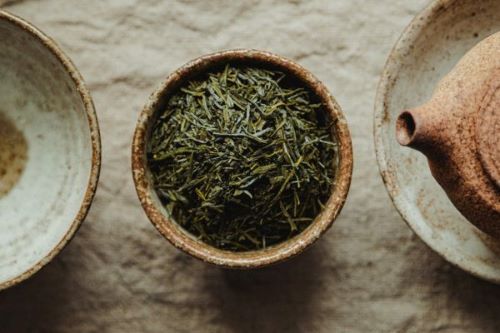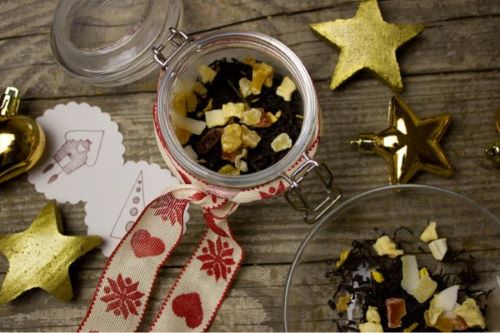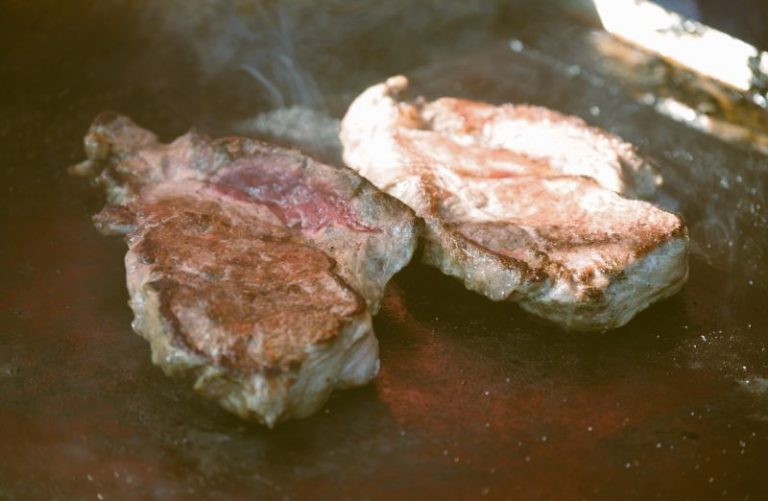

Are you excited to take your wholesale tea business to the next level by diving into the enchanting world of tea blending? In today’s vibrant tea market, where consumers crave one-of-a-kind tastes that linger in their memory, mastering the art of blending is your ticket to standing out. The mark of any good tea blend is balance. Tea blending is imaginative and yet cautious at the same time. This article is your personal invitation to explore the fascinating realm of tea blending with us. We’ll uncover the secrets to crafting teas that not only captivate but also evoke emotions, driving sales and leaving a lasting impact on your customers. Get ready to embark on a flavorful journey that will ignite your passion for tea blending like never before.
Significance of Unique Tea Blending in the Wholesale Tea Business
Historically, tea blending has played a significant role in the tea trade and industry. Its origins can be traced back to ancient China, where tea merchants and artisans began experimenting with blending different types of tea leaves to enhance flavour and aroma. Blending allowed merchants to create teas with consistent quality and flavour, regardless of variations in individual tea harvests.
During the 19th century, as tea consumption spread to Europe and other parts of the world, tea blending became even more prevalent. European tea merchants developed their own blending techniques, often incorporating local herbs, spices, and botanicals to cater to the tastes of Western consumers. Blending also served practical purposes, such as extending the shelf life of tea and masking any imperfections in flavour or aroma.
In addition to its practical applications, tea blending became a form of artistry and craftsmanship. Master blenders developed reputations for their skill in creating exceptional blends, and blending houses competed to produce the most innovative and sought-after teas.
Today, tea blending remains an integral part of the tea industry, practised by tea companies and artisans around the world. While modern technology has streamlined the blending process, the principles of balance, creativity, and quality that define tea blending have endured. Whether creating traditional blends or inventing new flavour combinations, tea blenders continue to push the boundaries of taste and craftsmanship, honouring a rich legacy that spans centuries.
Tea blending holds immense significance in the wholesale tea business for several reasons. Firstly, it allows wholesalers to create distinctive and memorable flavour profiles that differentiate their products from competitors’. In today’s saturated market, where consumers are increasingly seeking unique experiences, offering innovative blends can attract and retain customers.
Additionally, tea blending enables wholesalers to cater to diverse tastes and preferences. By combining different types of teas, herbs, spices, and botanicals, they can create blends tailored to specific demographics or occasions, such as soothing herbal blends for relaxation or energising blends for morning rituals.
Furthermore, blending allows wholesalers to maintain consistency in flavour and quality across batches. By carefully selecting and proportioning ingredients, they can ensure that each cup of tea delivers the same satisfying experience, fostering customer loyalty and trust.
Moreover, tea blending presents opportunities for wholesalers to showcase their expertise and creativity. It’s a chance to experiment with new flavour combinations, explore cultural influences, and innovate within the industry. This not only keeps the business exciting but also positions wholesalers as leaders in the tea market.
Overall, the significance of tea blending in the wholesale tea business lies in its ability to drive sales, cultivate brand identity, and meet the evolving demands of tea enthusiasts worldwide.
Concept of Crafting Unique Flavors
Tea blending is the art and science of combining different varieties of tea leaves, herbs, spices, flowers, or other botanicals to create a unique flavour profile. This process involves carefully selecting and proportioning ingredients to achieve a harmonious balance of taste, aroma, and mouthfeel in the final blend.
In the competitive landscape of the tea market, crafting unique flavours is not just a strategy; it’s a necessity to carve out a distinctive identity and capture consumers’ attention. Here’s why this concept holds immense value:
1. Market Differentiation: With countless tea options available to consumers, standing out is crucial. Crafting unique flavours allows tea brands to differentiate themselves from competitors, offering something novel and enticing to potential buyers.
2. Appeal to Diverse Tastes: Every tea drinker has unique preferences when it comes to flavour. By offering a diverse range of uniquely crafted blends, tea companies can cater to a broad spectrum of tastes, attracting a wider audience and fostering brand loyalty among different demographic groups.
3. Creating Memorable Experiences: Exceptional flavours have the power to create lasting memories. When customers encounter a tea blend that surprises and delights their taste buds, they are more likely to remember the experience and return for more, building a strong emotional connection with the brand.
4. Driving Consumer Interest and Engagement: Unique flavours generate buzz and excitement in the market. They spark curiosity and conversation among consumers, driving interest in the brand and its products. This engagement can lead to increased brand visibility and word-of-mouth recommendations.
5. Encouraging Innovation: The pursuit of unique flavours encourages tea companies to push boundaries and innovate. It inspires experimentation with unconventional ingredients, flavour combinations, and brewing techniques, fostering creativity and driving continuous improvement within the industry.
6. Reflecting Brand Identity: The flavours of a tea blend can reflect the ethos and values of the brand behind it. Whether it’s a commitment to sustainability, a celebration of cultural heritage, or a dedication to quality craftsmanship, unique flavours offer a platform for brands to express their identity and connect with consumers on a deeper level.
In essence, the concept of crafting unique flavours is not just about creating a product; it’s about creating an experience. It’s about stimulating the senses, sparking emotions, and leaving a lasting impression that keeps customers coming back for more.
Understanding Tea Blending

The term “base tea” refers to the primary type of tea used as the foundation or main component in a blended tea. It forms the backbone of the blend, providing the fundamental flavour, aroma, and characteristics upon which other ingredients are added or combined.
Base teas typically include varieties of true tea derived from the Camellia sinensis plant, such as black, green, oolong, or white tea. Each type of base tea contributes its own unique flavour profile and characteristics to the final blend.
- Black Tea: Known for its robust flavour, bold colour, and fully oxidised leaves, black tea is a popular choice as a base tea in many blends. It offers a rich, malty taste with notes of caramel, chocolate, and sometimes fruity or floral undertones, depending on the specific variety.
- Green Tea: Green tea is prized for its fresh, vegetal flavour, light body, and vibrant green colour. As a base tea, it lends a delicate and refreshing taste to blended teas, often complemented by grassy, floral, or nutty notes. Green tea is commonly used in blends with fruits, flowers, or herbs to create complex flavour profiles.
- Oolong Tea: Oolong tea occupies a middle ground between black and green tea in terms of oxidation levels, resulting in a diverse range of flavours and aromas. As a base tea, oolong contributes a nuanced taste profile that can vary from floral and fruity to toasty and creamy, depending on the oxidation level and processing techniques.
- White Tea: White tea is renowned for its subtle flavour, light body, and delicate aroma. It is made from young tea buds and leaves that undergo minimal processing, resulting in a tea with a delicate, slightly sweet taste and floral notes. White tea serves as an elegant and understated base in blended teas, allowing other ingredients to shine while imparting a subtle complexity to the overall flavour profile.
The choice of base tea in a blend depends on the desired flavour profile, aroma, and characteristics of the final product. By selecting the appropriate base tea and skillfully blending it with other ingredients, tea artisans can create unique and harmonious blends that delight the senses and captivate tea enthusiasts.
Techniques for Tea Blending
Let’s explore various techniques for tea blending:
- Single-Origin Blends: These blends consist of tea leaves sourced from a single location or plantation, allowing for a pure expression of terroir and flavour characteristics unique to that region. Advantages include showcasing the distinct qualities of a particular tea and appealing to connoisseurs seeking authenticity. However, limitations may arise in terms of flavour complexity and consistency across batches.
- Multi-Origin Blends: Combining tea leaves from multiple regions offers versatility and allows blenders to create more complex flavour profiles. Advantages include greater control over flavour balance, enhanced consistency, and the ability to tailor blends to specific taste preferences. Considerations include sourcing quality ingredients and maintaining consistency across different harvests.
Adjusting the ratios of different tea components is a key technique for achieving desired flavour profiles in blends. Blenders can experiment with varying proportions of base tea, accent teas, and flavouring agents to find the optimal balance of taste, aroma, and mouthfeel. Techniques such as trial and error, sensory evaluation, and feedback from taste testers can help blenders refine their blends and achieve desired flavour profiles. Herbs, spices, and botanicals offer endless possibilities for enhancing flavour complexity in blended teas. Blenders can experiment with a wide range of ingredients, including flowers, fruits, roots, and leaves, to add layers of aroma and taste. Considerations when incorporating botanicals include understanding their flavour profiles, sourcing quality ingredients, and balancing their intensity with the base tea to avoid overpowering the blend.
Blenders can create teas tailored to specific health benefits or dietary preferences by selecting ingredients known for their therapeutic properties or functional benefits. Examples include caffeine-free blends for those sensitive to caffeine, immune-boosting blends containing herbs like echinacea and elderberry, or digestive blends with ingredients such as ginger and peppermint.
Considerations when blending for health benefits include understanding the properties of individual ingredients, ensuring compatibility with the base tea, and providing transparent information to consumers about the intended benefits of the blend.
By mastering these techniques and approaches to tea blending, artisans can create blends that delight the senses, meet diverse consumer preferences, and stand out in the competitive tea market.
How to Blend Teas?
Blending tea is a creative process that requires experimentation, skill, and attention to detail. Here’s a step-by-step guide on how to blend tea:
1. Select Your Base Tea: Start by choosing a base tea that will form the foundation of your blend. Consider the flavour profile, aroma, and characteristics of different tea types (e.g., black, green, oolong) and select one that complements the desired flavour profile of your blend.
2. Gather Additional Ingredients: Depending on the flavour you want to achieve, gather additional ingredients such as herbs, spices, fruits, flowers, or botanicals. These ingredients will add complexity and depth to your blend, so choose them thoughtfully based on their flavour profiles and compatibility with the base tea.
3. Experiment with Ratios: Begin experimenting with different ratios of the base tea and additional ingredients. Start with small batches and adjust the proportions until you achieve the desired balance of flavours. Keep detailed notes of each blend to track your experiments and identify what works best.
4. Consider Flavour Profiles: Pay attention to the flavour profiles of each ingredient and how they interact with one another. Aim for a harmonious blend of flavours, avoiding any overpowering or conflicting tastes. Balance sweetness, bitterness, acidity, and other taste elements to create a well-rounded flavour profile.
5. Blend with Care: Once you’ve determined the ideal ratios of ingredients, blend them together with care. Use clean, dry equipment to avoid contamination and ensure accurate measurements. Consider using a blending machine or simply mixing the ingredients by hand in a large bowl.
6. Evaluate and Refine: After blending, evaluate the aroma, taste, and appearance of the tea blend. Take note of any adjustments that may be necessary to improve the flavour profile or balance of the blend. Don’t hesitate to go back and tweak the ratios of ingredients as needed.
7. Test and Taste: Conduct taste tests with a small group of individuals to gather feedback on your blend. Pay attention to their reactions and comments to identify any areas for improvement. Use this feedback to refine your blend further and make any final adjustments.
8. Package and Label: Once you’re satisfied with the final blend, package it in airtight containers to preserve freshness and flavour. Create labels that accurately describe the blend, including its ingredients, flavour profile, and brewing instructions.
9. Market and Sell: Finally, market your blend to potential customers through various channels such as online platforms, specialty stores, or local markets. Highlight its unique flavour profile, health benefits, and craftsmanship to attract customers and encourage them to try your blend.
By following these steps and allowing your creativity to flourish, you can master the art of blending tea and create unique, delicious blends that delight tea enthusiasts around the world.
Final Thoughts
In the realm of tea blending, every step is a delicate balance between science and artistry. It’s about combining flavours, aromas, and textures to create something truly extraordinary. As you delve into the world of tea blending, remember that each ingredient plays a crucial role in the final blend. Whether it’s selecting the perfect base tea or experimenting with herbs and spices, every decision you make contributes to the overall flavour profile. Take the time to understand the nuances of each ingredient and how they interact with one another. Consider factors like sweetness, bitterness, and acidity, and strive to achieve a harmonious balance that tantalises the taste buds. And don’t be afraid to get creative! Blending tea is as much about experimentation as it is about precision. Trust your instincts, follow your palate, and don’t be afraid to think outside the box. In the end, the beauty of tea blending lies in the endless possibilities it offers. So, embrace the process, enjoy the journey, and savour the satisfaction of creating something truly unique with every blend.


